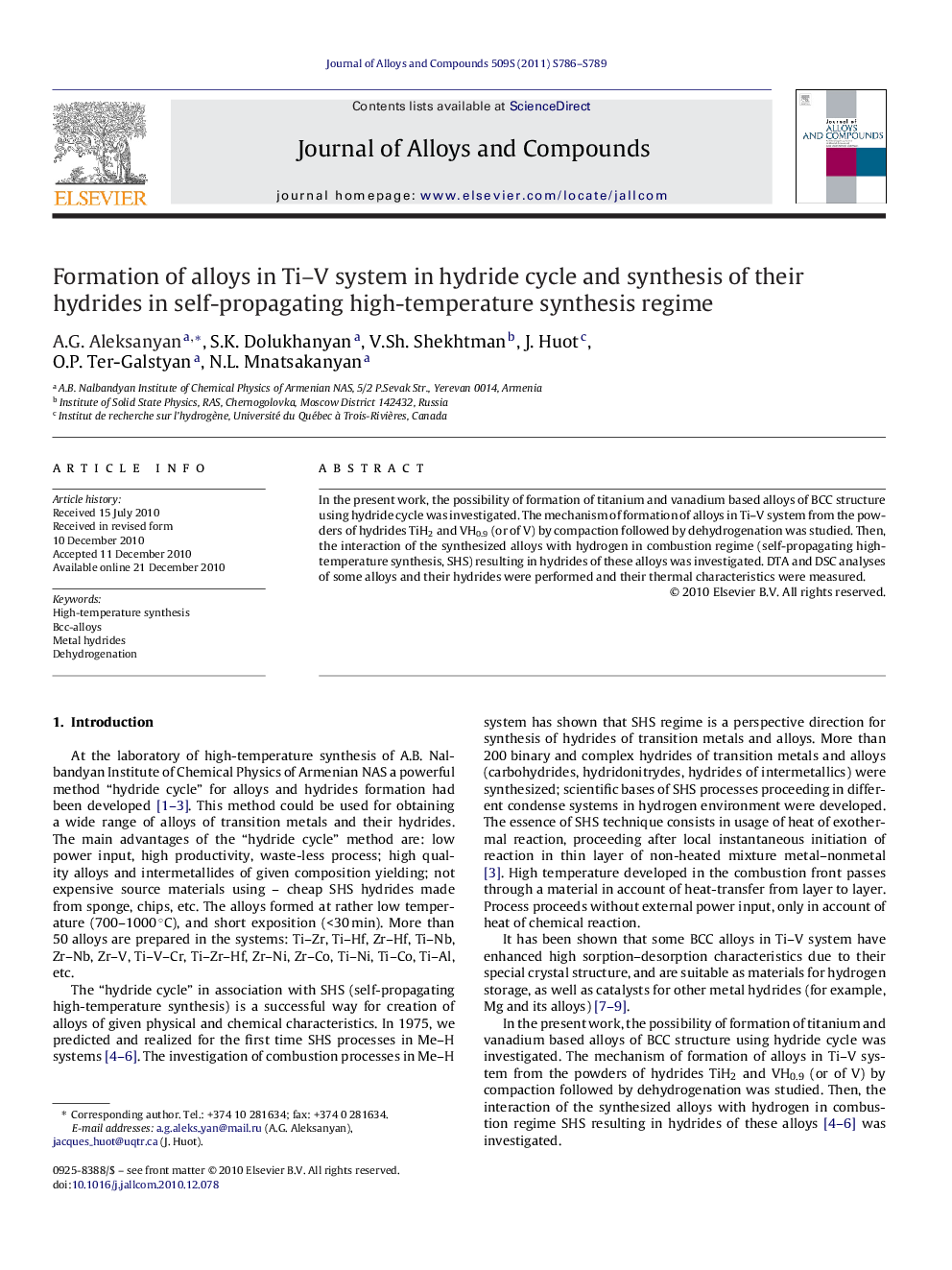| Article ID | Journal | Published Year | Pages | File Type |
|---|---|---|---|---|
| 1619611 | Journal of Alloys and Compounds | 2011 | 4 Pages |
In the present work, the possibility of formation of titanium and vanadium based alloys of BCC structure using hydride cycle was investigated. The mechanism of formation of alloys in Ti–V system from the powders of hydrides TiH2 and VH0.9 (or of V) by compaction followed by dehydrogenation was studied. Then, the interaction of the synthesized alloys with hydrogen in combustion regime (self-propagating high-temperature synthesis, SHS) resulting in hydrides of these alloys was investigated. DTA and DSC analyses of some alloys and their hydrides were performed and their thermal characteristics were measured.
Research highlights▶ We synthesize Ti-V alloys by new “hydride cycle” method. Structural characteristics of formed alloys we investigate by X-ray diffraction. ▶ We show that the alloys contain mainly BCC crystal structure. ▶ We investigate the interaction of the synthesized alloys with hydrogen in combustion regime. ▶ We study the properties of hydrides by X-ray, DTA and DSC analyses.
